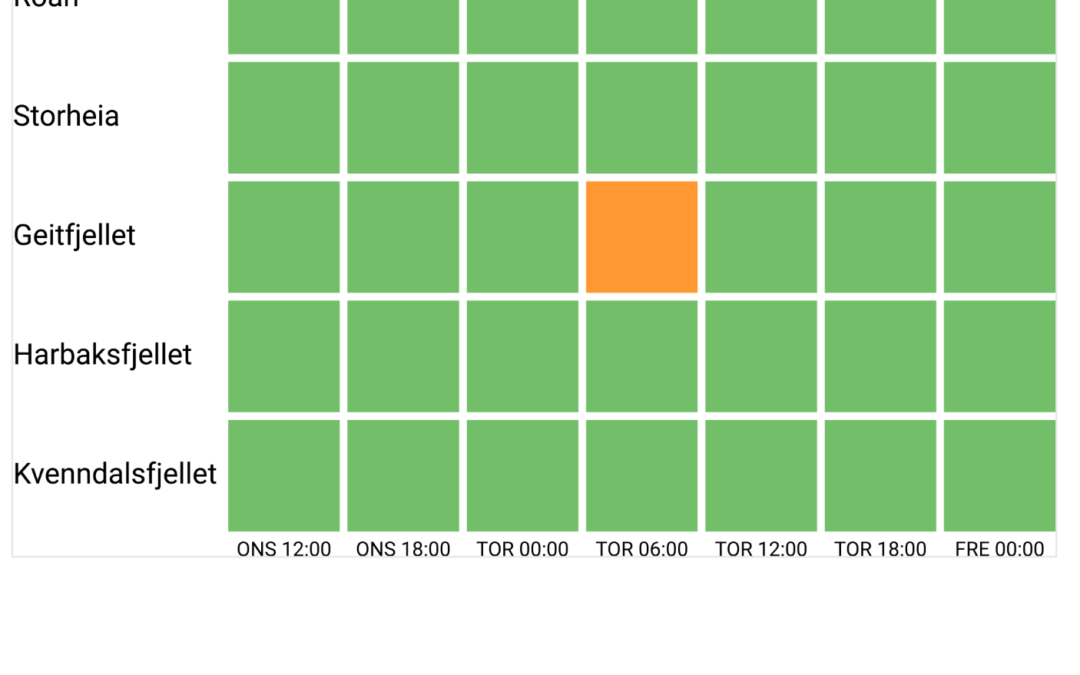Kjeller Vindteknikk is currently delivering icing forecast for five wind farms in Fosen in the form of a traffic light system. The screenshot shown above (https://www.fosenvind.no/vindparkene/iskastvarsel/) tells us that the icing risk is still low for these farms. As winter is approaching, the risks will periodically increase in the next months and we can assist in analysing and forecasting the icing conditions for our clients. If you need an answer to any of the questions below, feel free to contact us.
How much energy am I going to lose at my site?
With our IceLoss 2.0 model, we can use our internally produced climatic data to assess the expected energy loss due to icing at your site.
How much energy did I actually lose due to icing?
We can investigate your SCADA data to identify historical icing losses. We can also assess the performance of different energy-maximizing technologies, such as anti- or de-icing systems.
What is the risk of ice throw?
We have a state-of-the-art tool to analyse the risk of ice throw around each wind turbine. We can also perform detailed analysis of the risk of deaths or injuries on e.g. nearby highways or hiking trails. Luckily, no fatal accidents have been caused by ice throw so far. With turbines getting higher and more exposed to icing, careful planning and ice risk analyses will make sure to prevent accidents in the future.
How do I keep my wind farm personnel safe?
We offer special trainings for the service personnel in the wind farm, helping them better understand the risk of ice throw and develop internal strategies for handling the risk.
How should I properly dimension my power lines?
Power lines need to withstand the local climate conditions, including ice loads. We can perform calculations and help you decide the appropriate design of the power line system.
What is the probability of icing in the next couple of days?
We provide forecasts, as shown in the picture above, to give the risk of icing over the next few days. For wind turbines, we can also provide the expected energy loss and for power lines, the expected ice load.
How can I measure icing?
Check out our internally developed IceTroll, which can be used for both power lines and wind power. It measures the ice load according to the ISO 12494.
